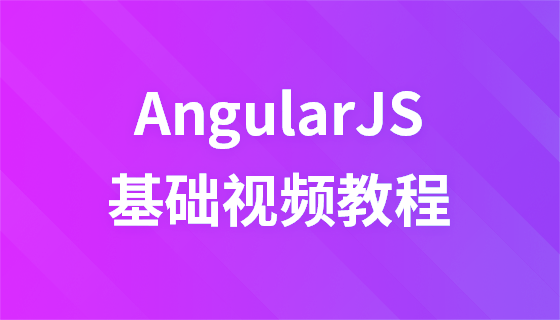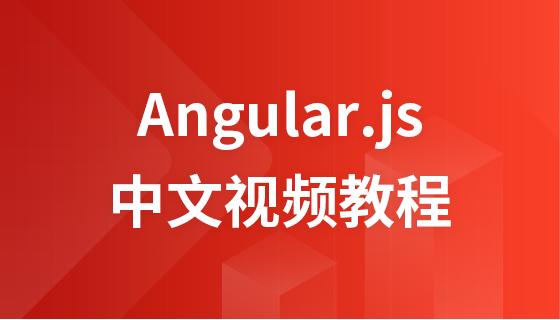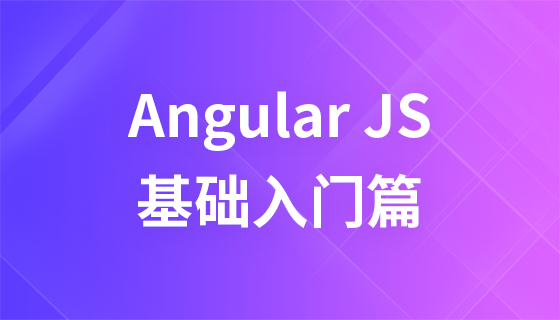這篇文章帶大家聊聊angular中的內容投影,介紹一下使用ng-content進行內容投影的方法,並了解有條件內容投影的實現方法,希望對大家有所幫助!

ng-content 進行內容投影1.1 <span style="font-size: 16px;">ng-content</span>
ng-content 元素是用來插入外部或動態內容的佔位符。父元件將外部內容傳遞給子元件,當Angular 解析範本時,就會在子元件範本中ng-content 出現的地方插入外部內容。 【相關教學推薦:《angular教學》】
我們可以使用內容投影來建立可重複使用的元件。這些組件有相似的邏輯和佈局,並且可以在許多地方使用。一般我們在封裝一些公共元件的時候常常會用到。
1.2 為什麼要使用內容投影
定義一個button 元件:
button-component.ts
@Component({
selector: '[appButton]',
template: `
<span class="icon-search"></span>
`
})
export class AppButtonComponent {}這個button 元件的目的是在按鈕內部加上一個搜尋的圖標,我們實際使用如下:
<button appButton>click</button>
我們發現元件只會展示搜尋圖標, 按鈕的文字不會展示,能你會想到最常使用的@Input 裝飾器,但是如果我們不只是想傳文字進來,而是傳一段html 進來呢?此時就會用到 ng-content。
1.3 單一插槽內容投影
#內容投影的最基本形式是單一插槽內容投影。
單插槽內容投影是指建立一個元件,我們可以在其中投影一個元件。
以button 元件為例,建立一個單槽內容投影:
button-component.ts
@Component({
selector: '[appButton]',
template: `
<span class="icon-search"></span> <ng-content></ng-content>
`
})
export class AppButtonComponent {}實際使用如下:
<button appButton>click</button>
可以發現,現在這個button 元件的效果是即顯示了搜尋圖標,又顯示了按鈕的文字(click)。即把<button appButton></button> 中間的內容投影 到了組件的<ng-content></ng-content>位置。
ng-content 元素是一個佔位符,它不會創建真正的 DOM 元素。 ng-content 的那些自訂屬性將被忽略。
1.4 多重插槽內容投影
#一個元件可以有多個插槽,每個插槽可以指定一個CSS 選擇器,該選擇器會決定要將哪些內容放入該插槽。此模式稱為多插槽內容投影。使用此模式,我們必須指定希望投影內容出現在的位置。可以透過使用 ng-content 的 select 屬性來完成此任務。
多個 ng-content 標籤。 ng-content 標籤,需要使用ng-content 標籤上的select 屬性作為識別。 select 屬性支援標籤名稱、屬性、CSS 類別和 :not 偽類別的任意組合。 select 屬性的 ng-content 標籤將作為預設插槽。所有未配對的投影內容都會投影在該 ng-content 的位置。 以button 元件為例,建立一個多槽內容投影:
button-component.ts
@Component({
selector: '[appButton]',
template: `
<span class="icon-search"></span> <ng-content select="[shuxing]"></ng-content> <ng-content select="p"></ng-content> <ng-content select=".lei"></ng-content>
`
})
export class AppButtonComponent {}實際使用如下:
<button appButton> <p>click</p> <span shuxing>me</span> <span class="lei">here</span> </button>
1.5 <span style="font-size: 16px;">ngProjectAs</span>
在某些情況下,我們需要使用ng-container 把一些內容包裝起來傳遞到元件中。大多數情況是因為我們需要使用結構型指令像 ngIf 或 ngSwitch 等。 。
在下面的範例中,我們將 header 包裹在了 ng-container 中。
@Component({
selector: 'app-card',
template: `
<div class="card">
<div class="header">
<ng-content select="header"></ng-content>
</div>
<div class="content">
<ng-content select="content"></ng-content>
</div>
<div class="footer">
<ng-content select="footer"></ng-content>
</div>
<ng-content></ng-content>
</div>
`
})
export class AppCardComponent {}使用:
<app-card>
<ng-container>
<header>
<h1>Angular</h1>
</header>
</ng-container>
<content>One framework. Mobile & desktop.</content>
<footer><b>Super-powered by Google </b></footer>
</app-card>由於ng-container 的存在,header 部分並沒有被渲染到我們想要渲染的插槽中,而是渲染到了沒有提供任何selector 的ng-content 中。
在這種情況下,我們可以使用 ngProjectAs 屬性。
在上面的 ng-container 加上這個屬性,就可以按照我們的期望來渲染了。
<app-card>
<ng-container ngProjectAs='header'>
<header>
<h1>Angular</h1>
</header>
</ng-container>
<content>One framework. Mobile & desktop.</content>
<footer><b>Super-powered by Google </b></footer>
</app-card>如果你的元件需要有条件地渲染内容或多次渲染内容,则应配置该元件以接受一个 ng-template 元素,其中包含要有条件渲染的内容。
在这种情况下,不建议使用 ng-content 元素,因为只要元件的使用者提供了内容,即使该元件从未定义 ng-content 元素或该 ng-content 元素位于 ngIf 语句的内部,该内容也总会被初始化。
使用 ng-template 元素,你可以让元件根据你想要的任何条件显式渲染内容,并可以进行多次渲染。在显式渲染 ng-template 元素之前,Angular 不会初始化该元素的内容。
2.1 <span style="font-size: 16px;">ng-container</span>
既不是一个组件,也不是一个指令,仅仅是一个特殊的tag而已。 使用 ng-container 渲染所包含的模板内容,不包含自身。
<div>
<ng-container>
<p>My name is wyl.</p>
<p>What is you name?</p>
</ng-container>
</div><ng-container> 标签消失了,并没有起任何作用<div> <p>My name is wyl.</p> <p>What is you name?</p> </div>
遍历或 if 判断 时,它可以承担一个载体的作用<ul>
<ng-container *ngFor="let item of items">
<li>{{ item .name}}</li>
<li>{{ item .age}}</li>
<li>{{ item .sex}}</li>
</ng-container>
</ul>另外,ng 中常见错误之一的 for 和 if 不能写在同一标签上(在一个宿主元素上只能应用一个结构型指令),利用 ng-container 标签可以在实现功能的基础上减少层级的嵌套。
2.2 <span style="font-size: 16px;">ng-template</span>
先来看下面一段代码
<ng-template>
<p> In template, no attributes. </p>
</ng-template>
<ng-container>
<p> In ng-container, no attributes. </p>
</ng-container>浏览器输出结果是:
In ng-container, no attributes.
即 <ng-template> 中的内容不会显示。当在上面的模板中添加 ngIf 指令:
<ng-template [ngIf]="true"> <p> ngIf with a ng-template.</p> </ng-template> <ng-container *ngIf="true"> <p> ngIf with an ng-container.</p> </ng-container>
浏览器输出结果是:
ngIf with a ng-template. ngIf with an ng-container.
2.3 <span style="font-size: 16px;">ng-template</span> 和 <ng-container> 的配合使用
<ng-container *ngIf="showSearchBread; else tplSearchEmpty">
暂时搜索不到您要的数据喔
</ng-container>
<ng-template #tplSearchEmpty>
快快开始获取吧!
</ng-template>2.4 <span style="font-size: 16px;">ngTemplateOutlet</span>
插入 ng-template 创建的内嵌视图。 ngTemplateOutlet 是一个结构型指令,接收一个 TemplateRef 类型的值;
<div *ngTemplateOutlet="tpl1"></div>
<ng-template #tpl1>
<span>I am span in template {{title}}</span>
</ng-template>
*ngTemplateOutlet = "templateRefExp; content: contentExp "
ng-template 元素的 #ID可空参数
content 是一个对象,这个对象可以包含一个 $implicit 的 key 作为默认值, 使用时在 模板 中用 let-key 语句进行绑定
content 的非默认字段需要使用 let-templateKey=contentKey 语句进行绑定
使用如下:
@Component({
selector: 'ng-template-outlet-example',
template: `
<ng-container *ngTemplateOutlet="greet"></ng-container>
<hr>
<ng-container *ngTemplateOutlet="eng; context: myContext"></ng-container>
<hr>
<ng-container *ngTemplateOutlet="svk; context: myContext"></ng-container>
<hr>
<ng-template #greet><span>Hello</span></ng-template>
<ng-template #eng let-name><span>Hello {{name}}!</span></ng-template>
<ng-template #svk let-person="localSk"><span>Ahoj {{person}}!</span></ng-template>
`
})
class NgTemplateOutletExample {
myContext = {$implicit: 'World', localSk: 'Svet'};
}2.5 利用 <span style="font-size: 16px;">ngTemplateOutlet</span> 进行内容投影
@Component({
selector: 'app-card',
template: `
<div class="card">
<div class="header">
<ng-container *ngTemplateOutlet="headerTemplate; context: { $implicit: title, index: otherDate }"></ng-container>
</div>
</div>
`
})
export class AppCardComponent {
@ContentChild('header', { static: true }) headerTemplate: TemplateRef<any>;
public title = 'Test';
public otherDate = {
auth: 'me',
name: 'appCard'
};
}使用
<app-card>
<ng-template #header let-label let-item="otherDate">
<h1>Angular</h1> {{label}} (Test) and {{otherDate | json}} ({auth: 'me', name: 'appCard'})
</ng-template>
</app-card>更多编程相关知识,请访问:编程教学!!
以上是聊聊angular中進行內容投影的方法的詳細內容。更多資訊請關注PHP中文網其他相關文章!



